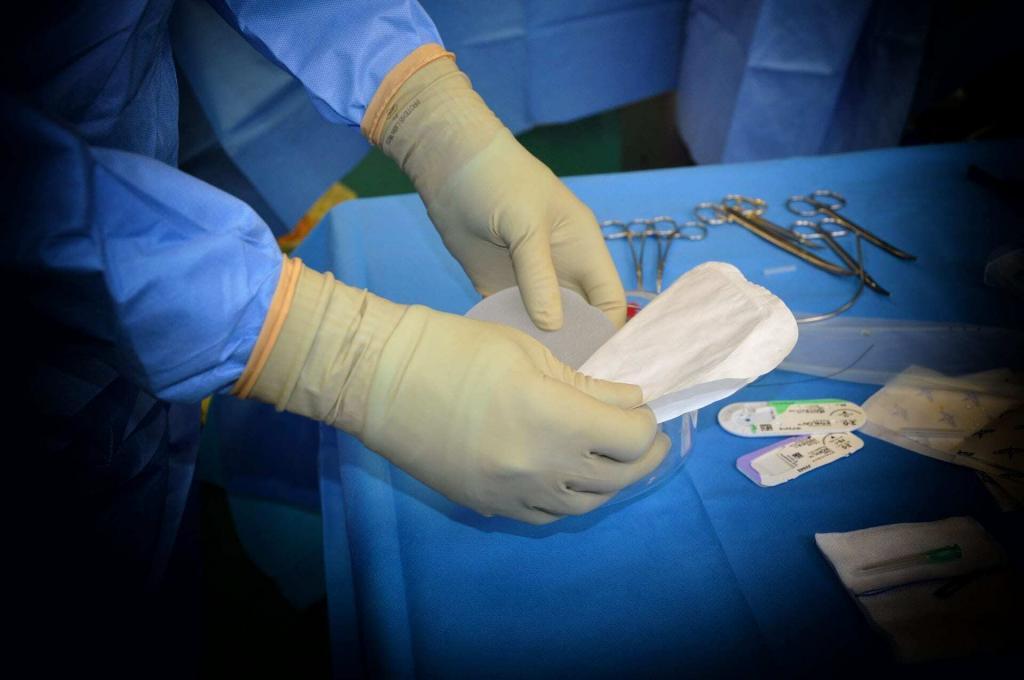Breast implant-associated anaplastic large cell lymphoma (BIA-ALCL) is a rare cancer of the immune system. The cancer occurs mainly in people with breast implants. Although it sounds like it could be breast cancer, it’s not. This type of cancer doesn’t affect everyone but only a small number of people who’ve received mainly textured breast implants. This rare form of T-cell lymphoma occurs primarily in the fibrous capsule or scar tissue that surrounds the breast implant. In more advanced cases, BIA-ALCL can spread to the lymph nodes near the breasts.
BIA-ALCL progresses slowly compared to other forms of cancer. Treatment usually involves the surgical removal of the breast implants and scar tissue.
Before getting breast augmentation, you should be aware of all the breast implant risks and side effects involved. Ask plenty of questions and ensure that you choose a qualified and experienced plastic surgeon to perform the procedure.
What is BIA-ALCL?
Breast implant-associated anaplastic large cell lymphoma (BIA-ALCL) is a type of immune system cancer. There is a risk of developing BIA ALCL after breast implant surgery. The cancer usually develops about 8 to 10 years after breast surgery. Data from the British Association of Plastic, Reconstructive and Aesthetic Surgeons (BAPRAS) suggests that BIA-ALCL occurs in 1 in every 24,000 implants inserted in the UK.
This type of cancer occurs in the scar tissue of capsule fluid around the breast implant, but it can spread through the whole body. Although the cancer can develop because of both saline-filled and silicone gel-filled implants, the implant’s surface appears to make a big difference. This type of cancer seems to only develop in patients with implants with a textured surface (shell) or those who have had them in the past.
What are the Symptoms of BIA-ALCL?
As with any cancer, early detection is key to a good outcome. Breast implant-associated anaplastic large cell lymphoma is rare. One thing to remember is that BIA-ALCL isn’t breast cancer. Instead, the cancer grows in the scar tissue or fluid that forms around breast implants. In rare cases, the cancer can manifest like breast cancer, where you feel a lump in the breast or armpit.
Symptoms of the disease occur years after breast surgery. Since the cancer doesn’t cause a lump in the breast like in breast cancer, most people don’t realise that they have it.
Early stage BIA-ALCL symptoms include:
- Fluid development is the most common symptom of breast implant-associated anaplastic large cell lymphoma. Fluid can develop around one or both implants after the surgical incision heals.
- Increased breast size as fluid collects around the implant or scar tissue that develops around the implant on one or both sides.
- In rare cases, the cancer may present as a lump in the tissue that develops around the implant, near the implant itself or armpit.
- Pain and redness as cancer progresses and more fluid collects in the breast tissue.
After breast surgery, it’s normal for fluid to collect around the implant. When that happens, it’s not a symptom of BIA-ALCL but part of the healing process. Usually, the doctor places drain tubes at the surgical site to drain any fluid as you recover.

However, if you notice fluid collection around your breast implant and present with any other symptoms, it’s vital that you contact your GP immediately or a plastic surgeon. In most BIA-ALCL cases, the cancerous cells form in the seroma fluid without local spread. Such a case is manageable since the doctor removes the breast implants and the surrounding fibrous capsule.
Treatments like chemotherapy and radiotherapy are recommended if cancer spreads to other tissues and organs. The BIA-ALCL survival rate is high, but you must be on the lookout for symptoms, especially if you have textured breast implants.
What are the Risk Factors for Developing BIA-ALCL?
The exact cause of BIA-ALCL is unknown, but there does seem to be a higher risk with textured implants. There are no specific recommendations from trusted bodies about implants to avoid. The actual risk of an individual developing BIA-ALCL is low.
There is a risk for all patients, and there is no definitive way to check if a person has a higher chance of developing the disease. BIA-ALCL cases occur with both saline and silicone gel implants. Current research shows that the type of implant doesn’t seem to increase the risk of developing BIA-ALCL; the implant’s surface is the leading risk factor.
While the cancer is rare, it develops mainly in people with textured implants versus those with smooth surface implants. Talk to your plastic surgeon about possible breast implant risks before getting the surgery. A good surgeon will explain all the risks and guide you on the best and safest breast implants.
What is the Treatment for BIA-ALCL?
Treatment for BIA-ALCL involves surgery. Usually, the first step is to remove the breast implant and the surrounding tissue. You may also require radiation therapy, chemotherapy, and stem cell transplant therapy, depending on how widespread the cancer is. In general, the prognosis is good for those who receive timely treatment.
When it comes to BIA-ALCL, like a lot of cancers, timely treatment and intervention are crucial. If left unchecked, it can be fatal. Regular visits with your plastic surgeon will support your breast health. By being fully aware of the potential risks of breast implant surgery, you can decide to go ahead with the procedure based entirely on facts.
Is Breast-Implant Associated Anaplastic Large Cell Lymphoma Preventable?
There isn’t a way to prevent the development of the disease. However, early diagnosis and treatment can significantly improve your outcome. Contact your GP or plastic surgeon if you have breast implants and start experiencing symptoms like breast pain, swelling, changes in appearance or feeling a lump inside the breast or armpit. Discuss all your concerns with your plastic surgeon.
If you are thinking about breast augmentation surgery with implants, your plastic surgeon is the best person to help you make an informed decision. They will also help you decide on the best type of implants.
The prognosis for patients diagnosed with BIA-ALCL in the early stages is usually good. Unless the disease has spread to other tissues, there is a low chance of death or recurrence if the cancer is caught early and treated.
BIA-ALCL Symptoms UK: Safe Breast Augmentation Surgery
BIA-ALCL is an emerging risk of textured breast implants that patients should be aware of before getting breast surgery. Breast augmentation is a choice for many women, including breast cancer survivors, but like with any other cosmetic procedure, risks do exist. To reduce such risks, make sure you get your surgery at a premier plastic surgicery clinic.
If you are considering breast augmentation, contact us for a free consultation to find out if you are fit for the procedure. We’ll also guide you on the best type of implants for you to reduce the risk of developing BIA-ALCL.













